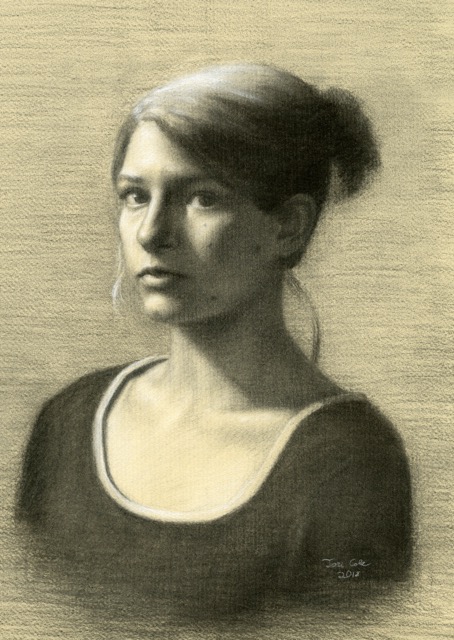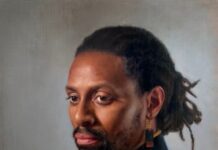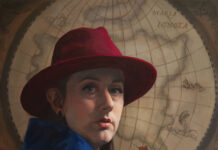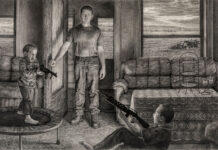
Each year, several artists win scholarships to attend the Figurative Art Convention & Expo (FACE). In this exclusive Q&A, winner Tori Cole shares her love of drawing portraits with sanguine chalk, her challenges and successes, and more.

Drawing Portraits: A Q&A
Cherie Dawn Haas: How and why did you first begin your artistic path?
Tori Cole: I first began my artistic path at age 11, when a school art teacher gave me some extra encouragement. I then found a local art teacher in Baton Rouge named Carol Arabie. Along with her incredible teaching and encouragement, she introduced me to the work of artists such as Susan Lyon and Scott Burdick, which is really when my love of art became fully formed and set me on the path I’m on today.
CDH: Was there a specific medium or subject matter that drew you in?
TC: I would say sanguine chalk was the first medium that really piqued my interest, and it still remains my favorite to work with to this day. It really spoke to me from the first time I saw a sanguine chalk drawing in Carol Arabie’s studio. Something about how it was so delicate, yet still strong in its impact, really made me want to try it out. In my experience, I have found that sanguine chalk is not quite as easy to change once you have made a mark as compared to charcoal. With this drawing medium, you have to really focus and be patient to get an accurate drawing. Once you have laid down that base, it creates a very beautiful and rich surface when you start blending with paper towels (I use the Viva brand for this), or a blending stump.

CDH: How has your art changed over time?
TC: My art has changed from drawing portraits from photos, to trying to really observe from life and thinking about the narratives I can bring to subject matter such as still-lifes and figurative work, which is currently where my interest lies.
CDH: What is one of the biggest challenges you’ve faced along the way? And how have you overcome it?
TC: My biggest challenge has honestly been with the intimidation that comes from trying to pursue art as a career path. I have been able to overcome this by talking with working artists about how they have been able to make a career for themselves and not shying away from learning about the business side of art.
For example, I have set up my own website and created business cards, and I really try to put myself in front of people to market myself and my work. I take commissions as they come and try not to undervalue my work to establish to others that this is my serious career. I also try to be proactive about applying for scholarships and grants, as well as submitting work for shows and publications so that I can spread my work to a larger audience.
Related Article > Dan Thompson on Drawing Cadavers

CDH: Where do you see yourself a year from now?
TC: A year from now I hope to be attending an atelier full-time as a way to fully round out the education I have been receiving for the last four years.
CDH: What advice do you have for someone with less experience than you?
TC: My advice for anyone starting their art education is to know that there is no “magic” art school that will make them an artist. At the end of the day, it is up to the individual artist to decide what art they want to do, and ultimately how they want to do it. Self-motivation is key.
CDH: How did you originally hear about FACE?
TC: I heard originally about FACE through a friend who was encouraging me to apply for one of the scholarships they were offering.
CDH: What surprised you at the event?
TC: At FACE, I was surprised at the variety of demos and presentations they offered. It felt like there was something to interest everyone at the event.

CDH: What’s the most important thing you learned or experienced at FACE?
TC: The most important thing I experienced at the event was getting to listen to artists discuss not just the technical aspects of figurative art, but what we can do with it that will appeal to the emotional side of art and what we are ultimately trying to do with representational art that will make it important and lasting to a broader audience of people.
CDH: Anything else you’d like to add?
TC: The FACE conference was unique to me in that it offered everything from demos from all kinds of artists and styles, to talks about the history of art and the business side of art that I think everyone would find valuable.




